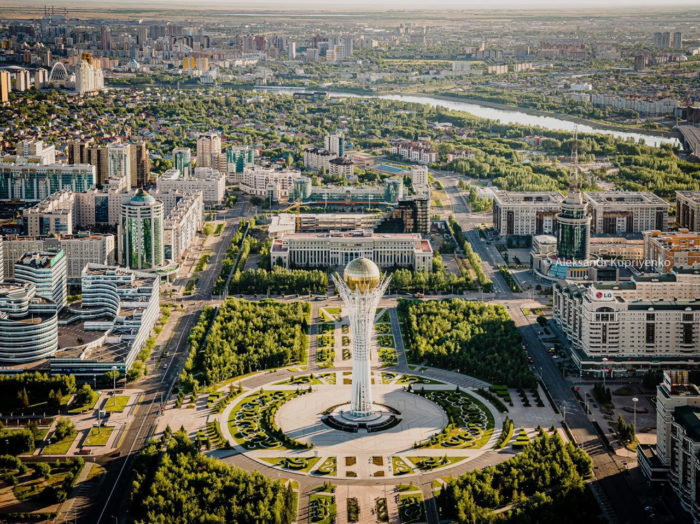NUR-SULTAN – The Asian Development Bank (ADB) projects the Kazakh economic growth to reach 3.2 percent in 2021 and 3.5 percent in 2022 in its latest ADB Outlook published April 28. The growth is expected to occur assuming investment, hydrocarbon production, and manufacturing increase and vaccination continue as scheduled.

In 2019, Kazakhstan and ADB celebrated the 25 years of partnership.
“The government anticipates that the pandemic will not worsen over the coming two years and that at least one-third of the population will be vaccinated by 2022. Economic forecasts reflect these assumptions and a pandemic assessment supported by the Asian Development Bank showed that government assistance prevented deeper contraction and promoted a faster economic rebound,” said the latest report.
In 2020, the economy that heavily relied on hydrocarbon exports and production was hit hard after the April plunge in oil prices and the subsequent oil cuts under the OPEC+ agreements.
The impact was coupled with the outbreak of the coronavirus infection that made the economy contract by 2.6 percent in 2020.
“On the supply side, services declined by 5.6 percent, with transport plunging by 17.2 percent and trade down by 7.3 percent. Communications meanwhile rose by 8.6 percent as demand for internet services expanded under lockdowns and working from home,” said the report.
Manufacturing saw a 3.9 percent growth underpinned by the government’s financial aid and demand for medicines and personal protective equipment.
Construction also boomed, increasing by 11.2 percent with “record-setting home building.”
During an April 14 press briefing, Kazakh Vice Minister of Industry and Infrastructure Development Kairbek Uskenbayev said that in 2020 Kazakhstan built 15.3 million square meters of housing. Despite the pandemic, investments in housing construction increased by 33.6 percent compared to 2019 and amounted to two trillion tenge (US$4.68 billion)
While the Kazakh government puts high hopes and resources to develop its agriculture, the sector showed a 5.6 percent growth in 2020 as “crop production increased by 7.8 percent under favorable weather and livestock grew by 3 percent.”
Economic prospects
In 2021, the Kazakh government plans to achieve three percent economic growth, and attract 15.4 trillion tenge (US$36.9 billion) of investments that will add 20 percent to the gross domestic product.
In the report, ADB experts forecast the nation’s industry to grow two percent this year and 2.8 percent in 2022.
“Services are forecast to rebound by 3.8 percent in 2021 as transport, trade, and catering benefit from the continued removal of quarantine restrictions. As economic activity normalizes, growth will taper to 3.4 percent in 2022. Expansion in agriculture is forecast to moderate to 3.3 percent in 2021 and 3.2 percent in 2022, reflecting limited investment prospects in the sector,” said the report.
What promotes greater recovery from the impact of COVID-19?
Innovation is key to supporting the economy on its way to recovering from the pandemic consequences, but facilitating innovation is yet another challenge.
Though promoting innovation has been on the national agenda for a while, more efforts and more resources need to be mobilized to achieve the results. The report noted it requires a tenfold increase in R&D spending from the current 0.1 percent of the gross domestic product allocated to this field.
Promoting innovation requires the correct environment to do so and a strong education system to train quality specialists.
To make the education system stronger, experts suggest increasing public spending on education, especially infrastructure and salaries.
“The government can support private efforts by streamlining existing tax incentives for R&D investment. In 2019, the private sector contributed only 45.8 percent of total R&D spending—less than the substantial majority found in many advanced economies. Current tax incentives are burdened by complexity, and they finance only research projects that are successfully applied. A more liberal set of incentives would recognize that research entails risk and uncertainty,” said the report.


